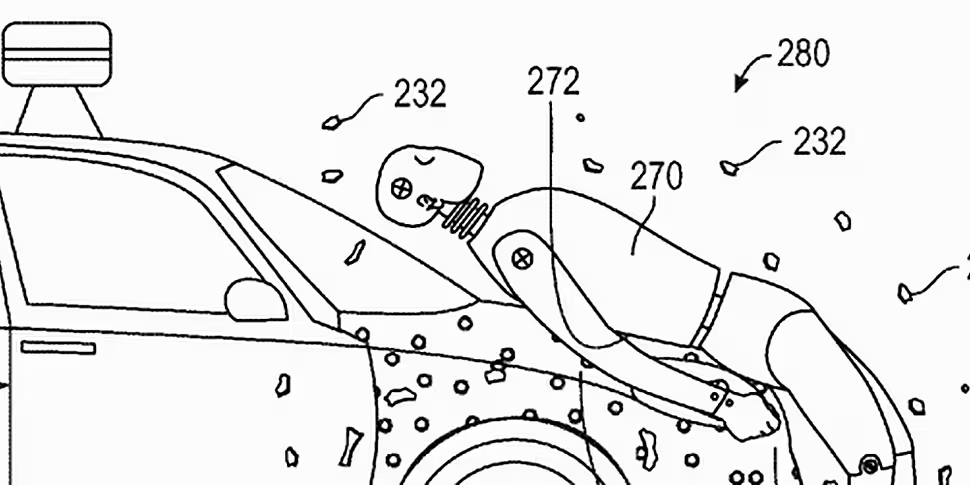Along with many innovations that Google has developed in its relatively short tenure as one of the world’s leading futurist companies, none has perhaps been as bizarre as the patent application the tech giant recently filed for an adhesive front end for its self-driving cars – which has been called by Internet users far and wide ‘pedestrian flypaper’.
There is some method to Google’s apparent madness, with a noble explanation behind the image’s somewhat ridiculous design; when vehicles collide with pedestrians, there is typically more than one impact for the person – the initial strike from the car, and then another with the road or another vehicle. Understanding that it is only a matter of when rather than if Google’s self-driving car strikes a pedestrian, the ‘flypaper’ would, in theory, cut the number of impacts in two.
“The front region of the vehicle may be coated with a specialised adhesive that adheres to a pedestrian, and thus holds the pedestrian on the vehicle in the unfortunate event that the front of the vehicle comes into contact with the pedestrian,” the patent states.
“The adhesion of the pedestrian to the vehicle may prevent the pedestrian from bouncing off.”
Google’s engineers envision the adhesive layer being stored under a breakable eggshell-like coating, smashing during a collision and protecting the adhesive layer from sticking to other objects on the road like leaves or insects.
A spokeswoman for the company said that while Google had filed the patent, there is no guarantee that it would be included in the car’s mass production. “We hold patents on a variety of ideas. Some of those ideas later mature into real products and services, some don’t.”
Google is not the only car manufacturer to develop somewhat orthodox ways of protecting pedestrians in the event of a collision. The Volvo V40 comes with a pedestrian airbag, positioned at the base of the windshield, where struck pedestrians often receive head injuries. Jaguar has also fitted some of its European vehicles with a small explosive charge designed to elevate the car’s hood by several inches to soften the impact.









